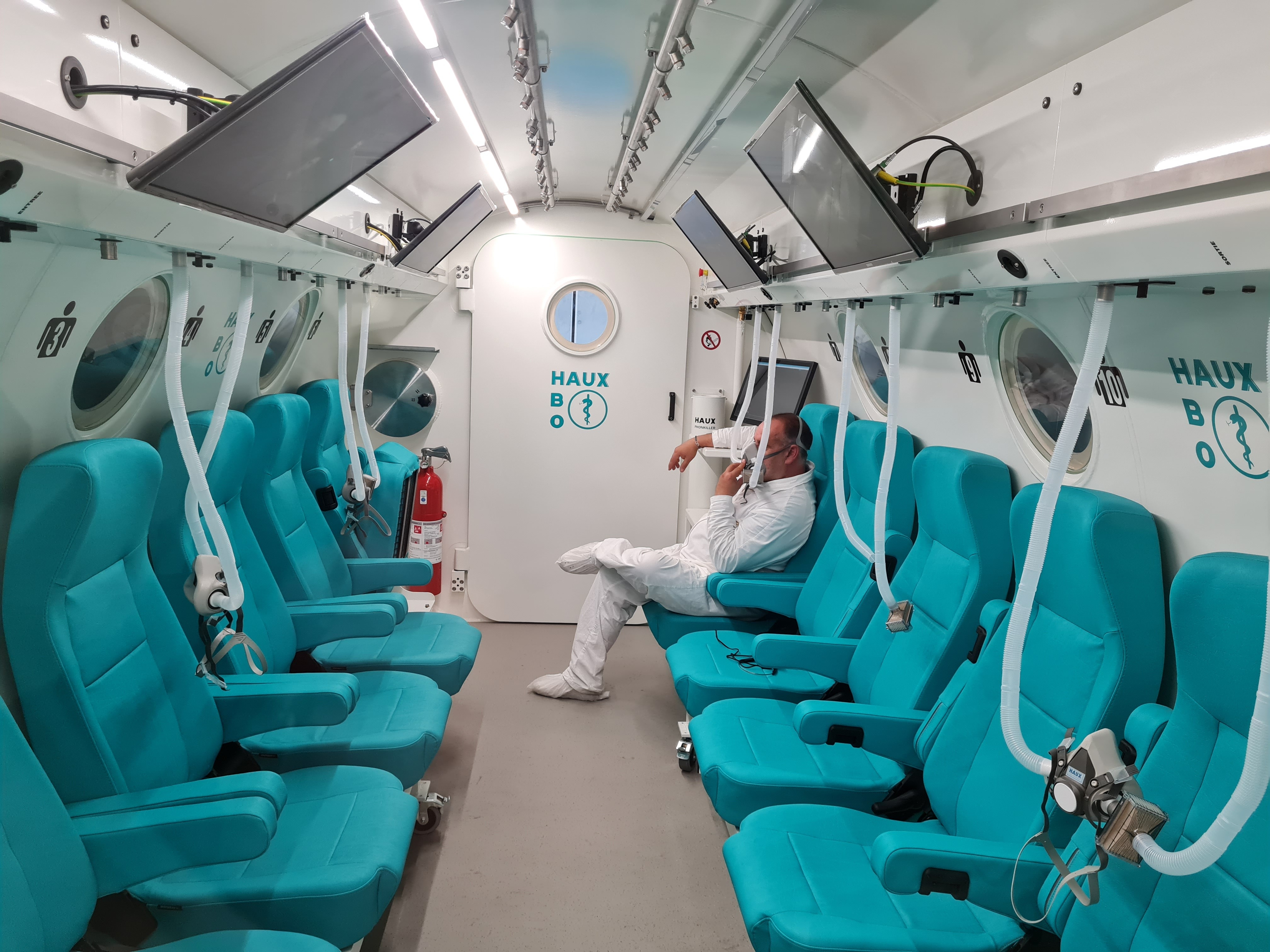Published on
Updated
Reading 3 min.
For the first time in Europe, a child benefited from oxygen therapy treatment at Nice University Hospital. Dr. Carl Willem, lead doctor for post-stroke cases in the Hyperbaric Oxygen Treatment Unit, reveals the details of this medical advance to us.
While he suffered a double stroke at the age of 5, little Simon, now 9 years old, was recently treated with oxygen therapy. A feat achieved by the Nice University Hospital teams.
A double stroke following a serious fall
It was Simon’s parents, wishing to help their son regain his full abilities, who called on Dr Carl Willem who reported it to the head of the hyperbaric medicine department at Nice University Hospital.
The young Bordeaux resident was suffering from a double stroke, which occurred following a serious fall in June 2020.
“Following his strokes, Simon ended up regaining all his motor skills but still has difficulties, mainly concerning dual task functions, such as reading or writing, but also fatigue. We had read many publications and works, in particular those of Shaï Efrati, who demonstrates the effectiveness of oxygen therapy by hyperbaric chamber at the cognitive level for children who have suffered a stroke.entrusted Simon’s parents to our colleagues at Var Morning. Gold“the Nice team, experts in hyperbaric chamber treatment of chronic adult post-strokes, is the only one to have agreed to treat our child.”
Under the leadership of Dr. Carl Willem, hospital practitioner referring to the “post-stroke” file, the hospital designed a tailor-made protocol for the little boy: 60 oxygen therapy sessions almost daily (5 days a week), a duration of 70 minutes, and this – for three months.
“Hyperbaric” medicine, also known as hyperbaric oxygen therapy, which consists of administering to patients a large quantity of oxygen in a pressurized environment.
“Hyperbaric oxygen therapy, in the minds of many doctors and patients, is diving medicine. However, it is also a regenerative medicine, which allows all types of tissues to heal: skin (ulcers, post-traumatic lesions, etc.), bones, digestive tract, mucous membranes (rectal, bladder lesions, etc.), muscles (tearing). muscular complex), crushing of limbs (following road accidents), spinal cord and even tissues auricular (sudden deafness)”, explains the hospital practitioner, before continuing “From now on, we are also interested in the brain. Professor Shaï Efrati is particularly known for his studies on the subject: he was interested in the effects of oxygen therapy on degenerative diseases. What do all these pathologies have in common? The presence of areas in “hypoxia” (deprived of oxygen) which will be corrected with hyperbaric oxygen. These non-functional areas will be reactivated, regenerated.”
In Simon’s case, the oxygen therapy protocol is a real success: after 60 oxygen therapy sessions, the young boy has made a lot of progress.

The treatment is based on the supply of oxygen to the targeted tissue(s) to reduce swelling.
“By increasing the partial pressure of oxygen in the metal hyperbaric chamber, that is to say by going from 1 ata – the pressure present at the surface of the earth – to 2.5 ata – pressure which is equivalent to that of a dive carried out at a depth of 15 meters – we stimulate the stem cells In fact, thanks to this protocol, we have 16 times more oxygen dissolved in the cells. It is therefore this abundance of oxygen which will repair, regenerate and heal. tissues, including brain tissue”, reveals the doctor.
The only potential obstacle to oxygen therapy? The beneficiary’s injuries. Dr. Carl Willem explains to us that not everyone who suffers a stroke can regain their abilities.
“We treat people who have mild to moderate deficits following a stroke. But for those who are too deficient (in other words, who suffered an acute stroke, leading to tissue necrosis), it is problematic.“, he confides.
As for the deadline, “It takes at least 6 months after the stroke and up to 36 months. However, I remain convinced that we could treat areas in hypoxia beyond this time limit.” concludes the practitioner with optimism.
